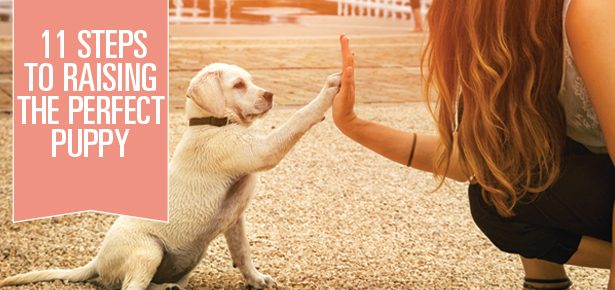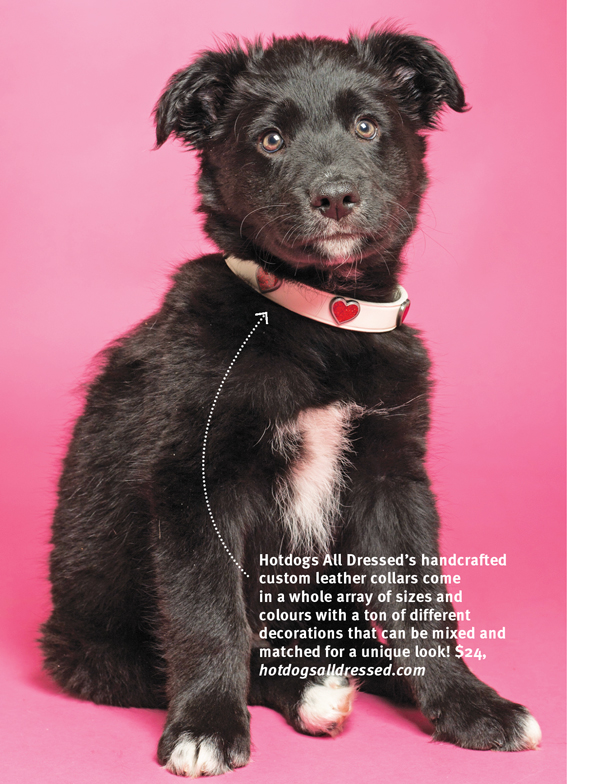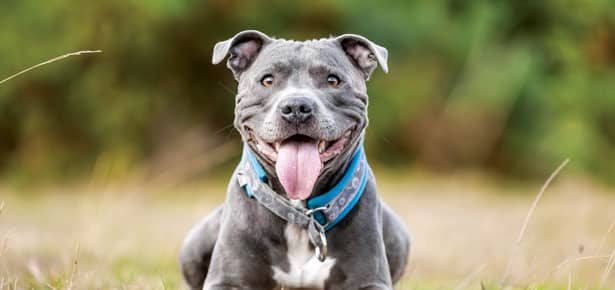

11 Steps To Raising The Perfect Puppy
Give your pup the tools to do so. And have fun together!
- Get on top of house training so you don’t have an intractable problem on your hands. (This is especially important with little dogs who can be harder to train, in part because their owners give them a pass.) Housetraining is all about being vigilant—by preventing opportunities for “accidents” your new pup will get the hang of appropriate elimination far more quickly. Yes, mistakes are inevitable, but minimizing these means less confusion as to where is an appropriate place to go potty. The key to success is a schedule; by maintaining a schedule you can predict when your puppy will have to “go.” For instance: Your puppy wakes up? Take her immediately outside to do her business. She’s just eaten? Ditto. Your puppy should never be wandering around unsupervised. Put in the initial time and effort and your pup will be housetraining right quick!
- Reward behaviour you like—and be aware if you’re inadvertently rewarding behaviour you don’t. Even negative attention is attention and can therefore enforce actions you don’t like. If your dog jumps up, try just ignoring her and then redirecting her rather than engaging with her. If she’s seeking attention by jumping up and you respond by saying her name and pushing her down, she just got what she was looking for!
Build confidence. A confident, well-adjusted dog is a relaxed happy dog. Many “bad” behaviours have their roots in fear, not aggression. Remember that your dog is constantly reading you and mimicking your emotional response, so if you want your dog to be more comfortable with big dogs, for example, mentor that. If you’re tense, your dog will be too.
- Get out there! A puppy’s key socialization window takes place from birth until around 12 to 16 weeks of age. This means from the moment you bring your new puppy home (usually 8 – 12 weeks of age; earlier is not better as there are lessons your pup needs to learn from her mom and littermates), it’s absolutely crucial that you expose your dog to positive experiences with other dogs, different people, places, and sounds.
- Get your dog used to her a travel crate so if you need to use one in the future (vacation, a trip to the vet), she will happily settle down in there, making both of your lives much less stressful. When Modern Dog’s Esther, a Miniature Dachshund, sees a carrier come out, she scratches at it until someone lets her get inside because she was taught to love carriers as a pup. (Treats and blankets are never a bad idea.)
- Lay the groundwork. It’s essential your dog knows—and knows well—basic commands. Having a solid “come” command in place can prove a life saver in an emergency. And everyday manners, the kind that make living together pleasant, are just as important. A dog that’s sitting, for example, can’t jump up. Practice everyday. A five minute practice session every single day (with treats!) not only keeps skills fresh in your dog’s mind, but is a great bonding opportunity.
- Timing is everything. You have to offer a reward the instant your pup does something good so that she draws an association between the ask (“sit”) and the treat. Likewise, it does zero good to chastise your dog for a puddle you discover on the floor. Unless you catch her in the act, she will have zero idea why you’re angry.
- Spend as much time with your new pup as possible. Dogs are social animals and, as such, need to be around their people. You want to build the foundation for a solid, lifelong bond. Teach your pup what you like and make it fun! (Think lots of tiny tasty treats.)
- Consistency, consistency, consistency. Set consistent rules so your dog knows what to expect. Don’t want your dog on the couch? Then never let her up on the couch! Sounds basic but many people make exceptions to rules, leaving their dogs confused.
- Don’t allow resource guarding to start. Put your dog’s dish down, let her eat a bit, then take it away. Put a little extra tidbit of something tasty in then give it back to her. Repeat. Work on being able to handle what your dog values without her guarding it.
- Remember that your dog inherently wants to please you. Give her the tools to do so. And have fun together!
Comments (0)
Join the newsletter and never miss out on dog content again!
"*" indicates required fields
By clicking the arrow, you agree to our web Terms of Use and Privacy & Cookie Policy. Easy unsubscribe links are provided in every email.
 Build confidence. A confident, well-adjusted dog is a relaxed happy dog. Many “bad” behaviours have their roots in fear, not aggression. Remember that your dog is constantly reading you and mimicking your emotional response, so if you want your dog to be more comfortable with big dogs, for example, mentor that. If you’re tense, your dog will be too.
Build confidence. A confident, well-adjusted dog is a relaxed happy dog. Many “bad” behaviours have their roots in fear, not aggression. Remember that your dog is constantly reading you and mimicking your emotional response, so if you want your dog to be more comfortable with big dogs, for example, mentor that. If you’re tense, your dog will be too.




